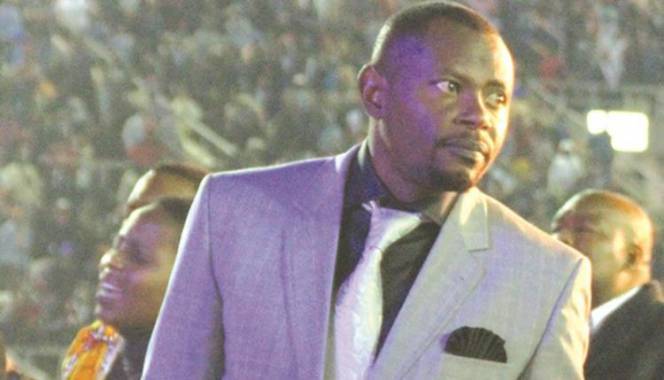
The Sunday Mail

WE continue with the issue of “resurrection” from last week. In the past weeks, we provided details that put Yahoshua’s death during crucifixion into serious doubt. If it’s true that Yahoshua the Nazarene did not die during crucifixion, then he was resuscitated in the tomb. What then did the scriptural scribes mean when they used the word “resurrection”?
The 14th century English word “resurrection” comes from Latin “resurrectus” which means “a rising again from the dead.” It is related to Latin “resurgere,” which means, “rise again, appear again.” In Strong’s Greek Concordance #386, it is “anastasis” which means “a rising again, up again.”
Literally, resurrection is the rising from the dead from the grave or “subterranean realm” that brings about a revival of a person to life.
Hebraically, “the power of the Divine over life and death is celebrated in the Song of Moses, “I cause death and make alive; I wound and I heal; None can deliver from My hand” (Deut. 32:39), the Song of Hannah, “The Divine causes death and makes alive. Casts down into the Sheol and raises up (1 Sam 2:6), the narratives of Elijah and Elisha, the book of Psalms, Wisdom Literature, and the prophetic books of Hosea, Isaiah, and Ezekiel, all of which pre-date Daniel.” “Sheol” is the Hebrew term used to describe “the abyss or the underworld abode where the dead are gathered to their kin.” — Leila Leah Bronner, A Journey to Heaven: The Jewish Search for Life Beyond, www.bibleandjewishstudies.net/articles/afterlife.htm
Rabbi Maimonides (1135-1204), a Hebrew physician, and philosopher, wrote on the subject, the “Ma’amar Tehiyyat Hametim” (“The Treatise on Resurrection”). About those who believe that the world to come involves physically resurrected bodies, he called such a person as being an “utter fool” whose such a belief is “folly.”
Maimonides contended that resurrection was not permanent or general. In his view, the Divine never violates the laws of nature. Rather, divine interaction is by way of “angels,” which Maimonides holds to be metaphors for the laws of nature, the constants by which the physical universe operates. Thus, if a unique event actually occurs, even it is perceived as a miracle, it is not a violation of the laws of nature (Commentary on the Mishna, Avot 5:6.) — www.basicjudaism.org/rambam.html
If Yahoshua the Nazarene is considered a human being who can be an archetype, then humanity experiences resurrection or renewal phenomenon daily.
Leon McKenzie, “Pagan Resurrection Myths and the Resurrection of Jesus” said there are renewal archetypes constructed and reinforced out of nature:
Vegetation — we bury (plant) seeds in the Spring, they decay and later germinate to growth for a harvest;
Climate — the four climatic cycles were associated with agricultural cycles as determined by the sun;
Sun — daily the sun is said to die every evening to rise again every morning to create a day, month and year;
Stellar phenomenon — the daily and seasonal appearance of a constellation, a configuration of relatively bright stars based on imaginary figures, die each night and reappear the following night;
Sleep and wakefulness — human sleep and death have been considered to be the same. When we are asleep, we lose our consciousness and then regain it when we wake up as new and refreshed self in the morning;
Community fortunes — every community experience the wane and wax of good fortune, fruitful harvest and drought, victory and defeat, birth of a new life and death of an existing life;
Mood changes — each day is dependent upon our moods and these affect our well-being. We have a taste of renewal when our moods change from low to high, dark to bright and sad to joyous.
From the above it can be noticed the resurrection was the humanisation or personalisation of the constant or cosmic Laws of Nature. The literalist narrative about the resurrection of Yahoshua was an allegory of something more profound about humanity and nothing to do with him as an individual.
The Neo-Platonist St Gregory of Nyssa said, “The resurrection is no other thing than ‘the re-constitution of our nature in its original form.” The original form is the uncorrupted True Self, the Greek “Christos” in relationship with the impersonal and infinite Life Force.
Next week we look at the natural and non-Christian origins and meaning of Easter.
Recommended readings:
Leon R. McKenzie, “Pagan Resurrection Myths and the Resurrection of Jesus: A Christian Perspective” (1997)
Ronald H. Nash, “The Gospel and the Greeks: Did the New Testament Borrow from Pagan Thought?” (2003)
Paul Tobin, “The Pagan Origins of the Resurrection Myth” www.rejectionofpascalswager.net/paganrising.html#14
For feedback email, [email protected] or tweet @shingaiRndoro. A gallery of previous articles is found at www.sundaymail.co.zw/author/shingairukwata



